Road meets gravel. That was the brief for the 145-mile FoCo Fondo, a gravel race of two halves – traversing the hardpacked dirt of Colorado’s eastern plains, before heading into the Rocky Mountains on terrain that lives up to its billing.
I’ve raced and ridden gravel around the world, but until this summer, I’ve never participated in a gravel race in the town I call home.
Press launches and other media events usually fill up my summer schedule, leaving little time to enjoy the local gravel scene in Fort Collins, Colorado.
With a free weekend on the calendar, I decided to try my luck at the longest distance the FoCo Fondo had to offer.
Would Allied's ECHO – a bike with adjustable geometry to switch between road and gravel personalities – Shimano's 12-speed Ultegra R8100 road groupset, a box-fresh set of Reserve carbon gravel wheels and 40mm-wide tyres be up to the job?
Welcome to the FoCo Fondo
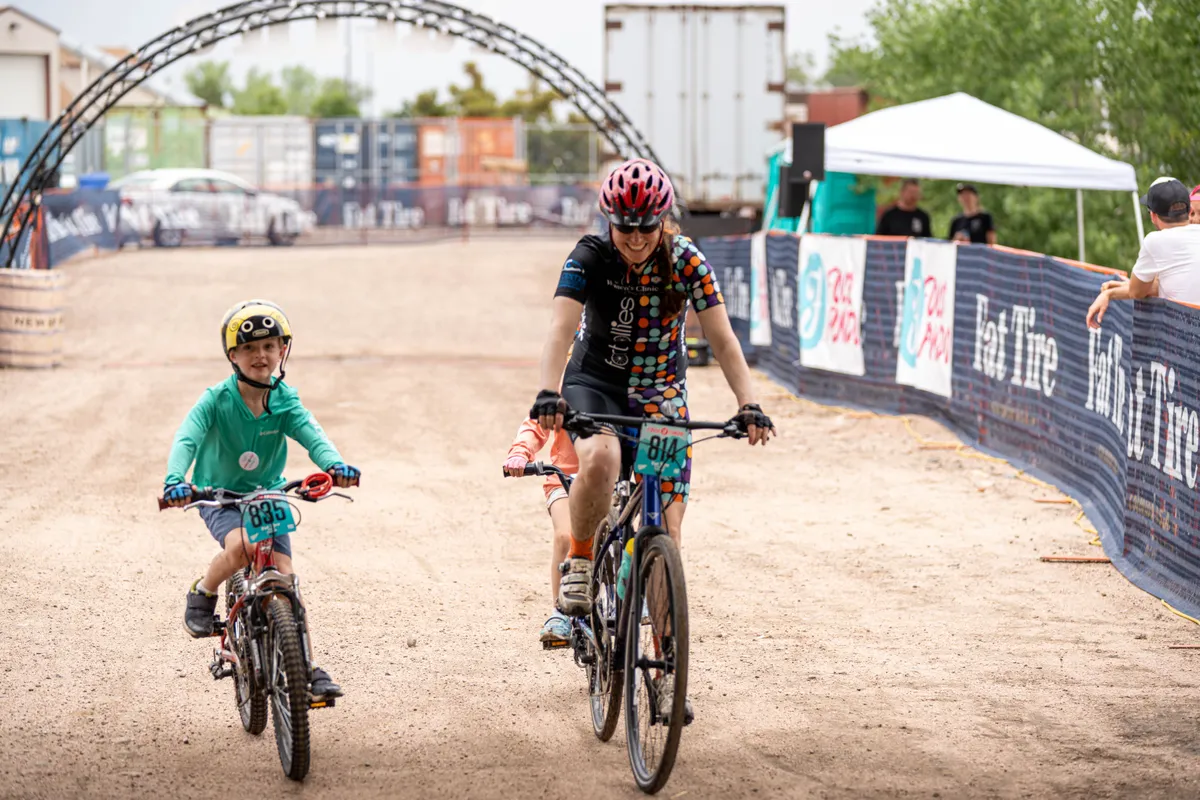
Zack and Whitney Allison are the pair of professional cyclists-turned-event-promoters behind the FoCo Fondo.
When they’re not racing or training for gravel races across the United States, they’re planning the weekend-long celebration of cycling that is the FoCo Fondo.
Now in its seventh year, this grassroots race that started as an underground “hide a cooler in a ditch” event now draws nearly 1,000 participants.
In addition to embracing diversity and inclusion, the FoCo Fondo has a race for riders of all ability levels. Events range from a 12-mile route for gravel-curious families to this year’s inaugural 145-mile race course.
Josh Patterson’s 2022 FoCo Fondo race bike
The horse: The US-made Allied ECHO convertible all-road/gravel frameset. Equipment highlights include Shimano’s 12-speed Ultegra Di2 R8100 group, the new Reserve 25|GR gravel wheels and 700 x 40 WTB Venture tyres.
Complete bike weight: 8.44kg / 18.6lb
The course: The FoCo Fondo Triple Dog Dare route. New for 2022, this was the longest of the five FoCo Fondo distances. The 145-mile / 233km route consists of rolling terrain on open rangeland, numerous unmaintained B-road segments, a jaunt through a cow-pie-filled pasture, steep mountain climbs and rocky descents. The total elevation gain for this course is 8,900ft / 2,713m with maximum elevation of 8,020ft / 2,445m.
The goal: To build a gravel race bike that would allow me to keep pace on the flats and endure the climbs.
Two races in one
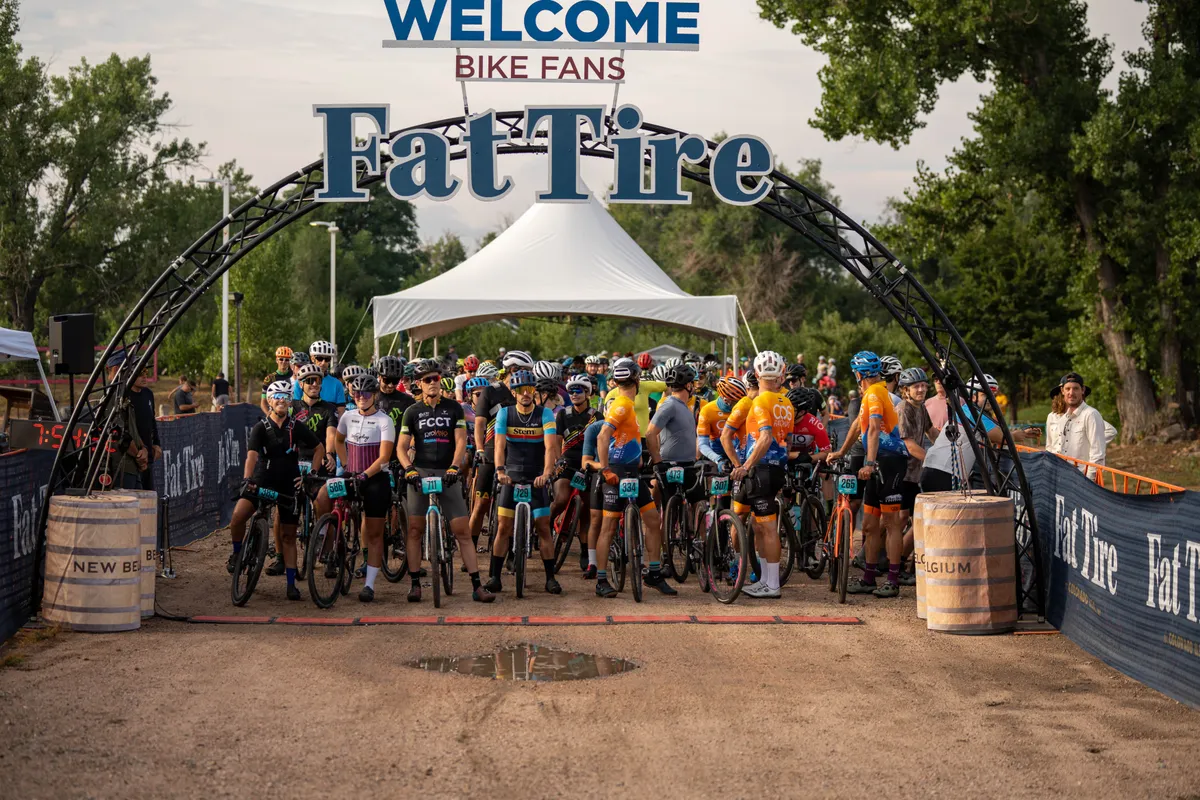
Initially, I had my sights set on the 102-mile / 164km 'Double Dog Dare' route, but I opted to transfer my entry to the new, longer race once the course was unveiled.
The 'Triple Dog Dare' might not be twice the distance, but there is an additional 3,900ft / 1,189m of elevation gain packed into those extra 43 miles. This extra-long course also has a split personality that makes it feel as if you’re gearing up for two entirely different races.
The first half of the route is shared with the shorter races and features rolling terrain on Colorado’s eastern plains. The majority of these gravel roads are hardpacked and fast, interspersed with sandy segments and unmaintained B-roads.
In addition to your competitors, your primary adversaries here are likely to be heat and high winds. Fast-rolling 32 to 35mm file-tread tubeless tyres on aero wheels and SRAM’s gravel-centric XPLR drivetrain could be the ticket to a successful finish.
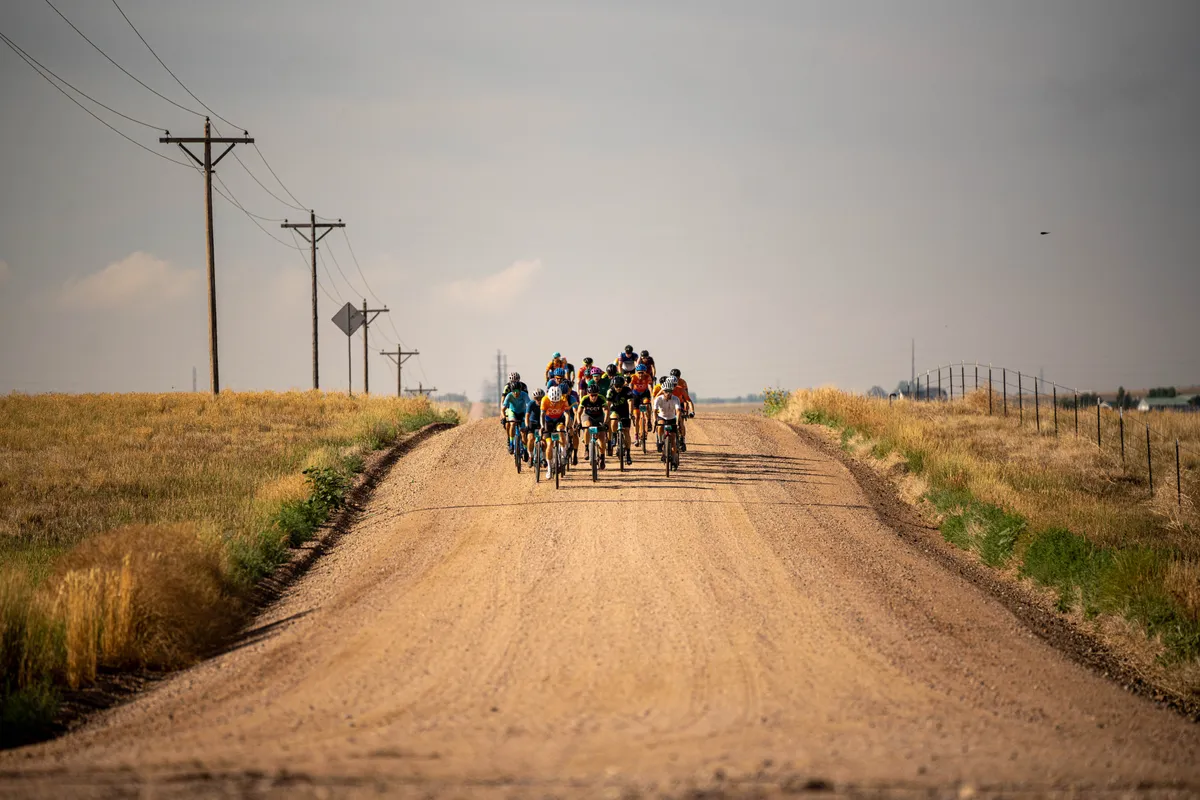
Once the route turns from east to west, the climbing starts, and it doesn’t let up.
Most of that climbing is crammed into a single, unrelenting 20-mile / 32km stretch with sustained 8-10 per cent grades that will leave racers gasping in the thin mountain air. As soon as you’ve caught your breath, you plunge down an equally steep and exceptionally rocky descent. There’s also the matter of frequent afternoon thunderstorms to contend with.
Equipment choices here shift to favour a double crankset or wider-range 1x 'mullet' drivetrain and lightweight wheels wrapped in 38 to 42mm-wide tyres to combat the fatigue and rocky descent riders hit at the 100-mile / 160km mark.
While the first portion of the descent from high alpine meadows back to the rolling prairie is rough, it isn’t long enough to warrant a gravel suspension fork, like I ran at Unbound this year.
With these divergent race segments in mind, I set out to make equipment compromises that would see me through the fast-paced first section without leaving me gassed when I reached the steep climbs later in the race.
“Go fast everywhere”

Given the dual nature of the FoCo Fondo’s Triple Dog Dare course, I chose a bike that’s split equally between road and gravel, the Allied ECHO.
This US-made carbon bike features geometry-adjusting flip chips in the fork legs and chainstays that allow the rider to switch between endurance road and gravel-race geometry.
Flipping the offset alloy plates is a painless process that takes about 10 minutes to complete. This isn’t a mid-ride adjustment, but rather, a clever solution for cyclists who want one bike for both road training and gravel racing.
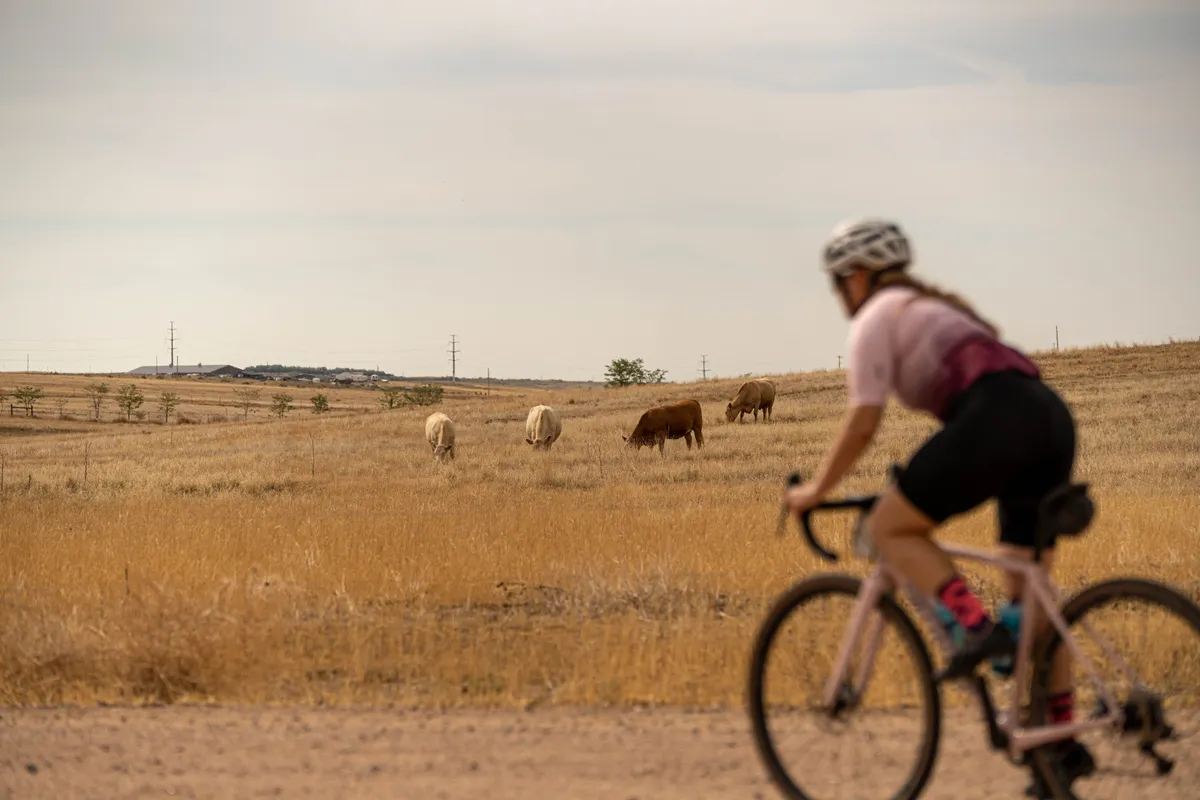
Switching the bike from road to gravel mode extends the chainstays from 415 to 425mm, raises the bottom bracket drop by 2.5mm to a still very low 75mm, and slackens the head tube angle by 0.5 degrees to 72.5 degrees. The 10mm adjustment to the length of the chainstay and fork increases the tyre clearance from 30 to 40mm.
“Go fast everywhere” is Allied’s motto for the ECHO, and while the geometry numbers and tyre clearance are conservative when compared to some of the best gravel bikes, which may hone in more on off-road capability, I felt the ECHO would be the right bike for a fast-paced gravel race such as the FoCo Fondo.
The supporting cast

In keeping with the road-meets-gravel theme, I equipped the ECHO with the new 12-speed Shimano Ultegra R8100 drivetrain with a 50/34t compact crankset paired to an 11-34t cassette. I’ve logged several thousand miles on my Shimano 12-speed groups, and they’ve provided fast and faultless shifting through nearly a year of riding.
This setup would give me the range I needed for the flats, the climbs and everything in between. The only downside to my drivetrain choice? No clutch rear derailleur.
Last summer, I erroneously assumed the launch of the latest Dura-Ace and Ultegra groups meant that a clutch-equipped 12-speed Ultegra RX Di2 rear derailleur would also be released as a stop-gap component until Shimano was ready to unveil 12-speed versions of its GRX gravel groups. Perhaps it’s due to supply chain issues, or not wanting to undercut sales of existing components, but I’m still waiting.
Sometimes, being a bike-part hoarder pays off. In my case, the solution to my clutchless woes was found in the depths of my parts bin – a Lizard Skins chainstay protector that adorned the chainstay of the first mountain bike I purchased back when Y2K rolled around. I hoped it would keep my high-tech drivetrain silent twenty-some years later.
The ECHO’s rolling stock consisted of Reserve’s new 25|GR wheelset. These carbon hoops have an internal width of 25mm and a respectably low weight of 1,339g, which seemed perfect for a gravel race with an excessive amount of climbing.
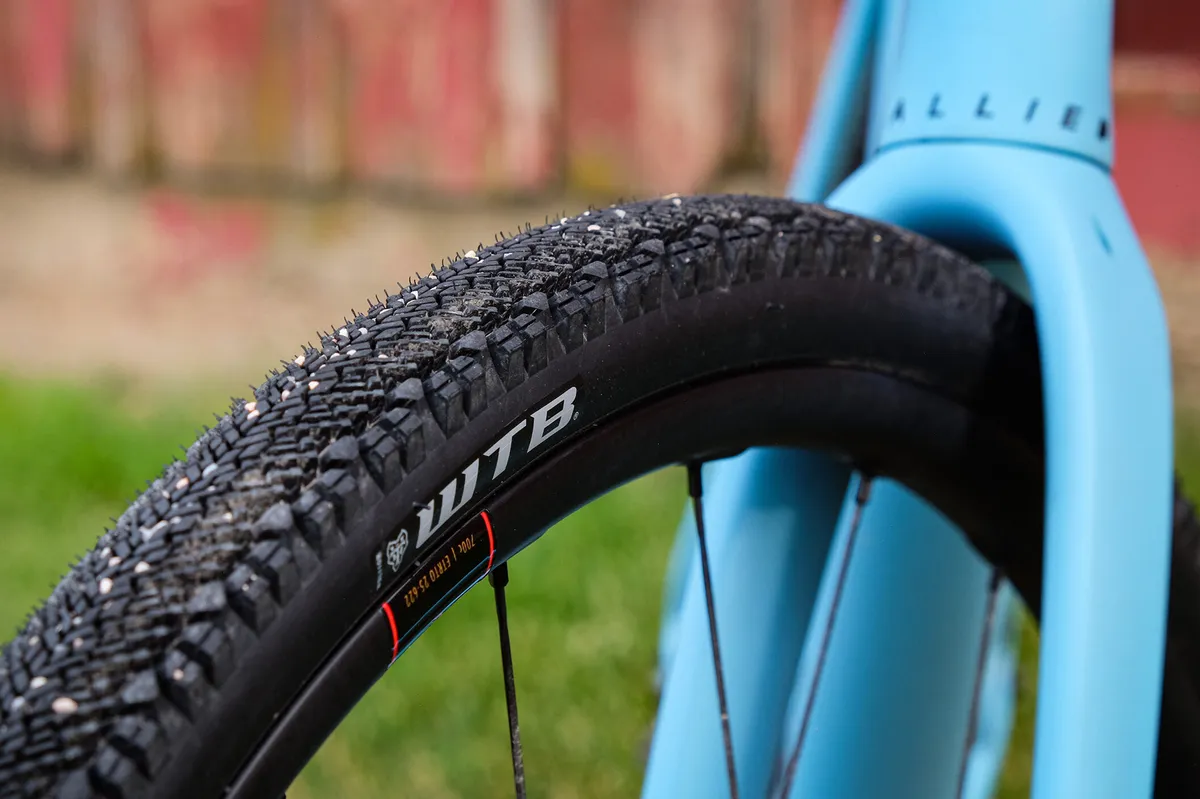
When it came to selecting tyres for the FoCo Fondo, I vacillated between two gravel treads from WTB, the 36mm-wide Vulpine, and the 40mm-wide Venture.
The Vulpine is lighter and faster-rolling. It would have been the better choice for the first portion of the event, but I was concerned I’d be sacrificing too much comfort over the long haul. I knew the Venture cornered well, especially in sandy conditions, and had enough volume to help me speed through the rocky descents with confidence. In the end, as a mountain biker at heart, the bigger tyre won out.
One aspect of the FoCo Fondo I didn’t have to obsess over was my nutrition/feed zone strategy. Unlike many other gravel events, there are numerous, well-stocked neutral aid stations (five in the case of the Triple Dog Dare race). Participants can get by with just two bottles and focus on enjoying themselves rather than worrying about packing enough to eat and drink.
Good, bad or a mixed bag?
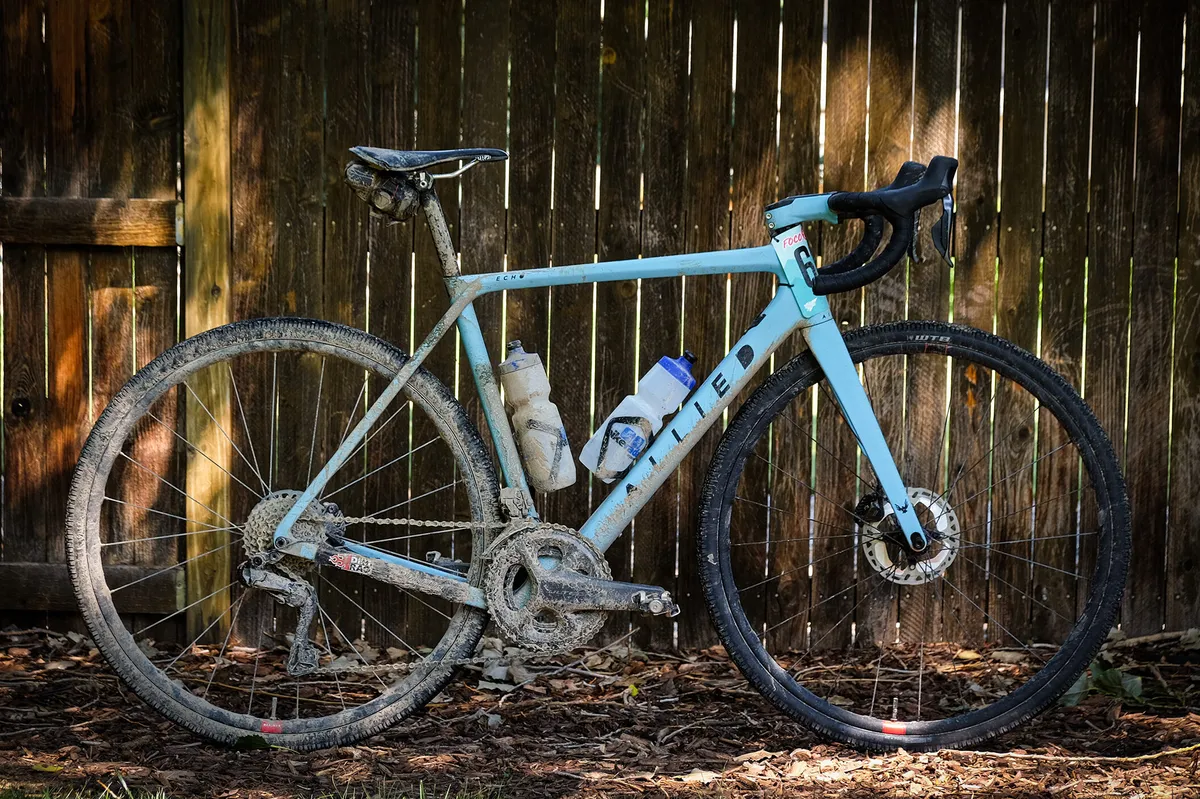
Many aspects of my setup proved to be a mixed bag, and sometimes that’s the nature of racing.
First and foremost, we lucked out with overcast skies and scattered showers throughout the afternoon. I’ll take racing in the rain over the sweltering 95f / 35c temps that are common for mid-July in Colorado.
Ultegra’s debut as a gravel race group was a success. Shifting was quick and accurate. Chain slap was only noticeable during the long, rocky descents, and my decades-old neoprene chainstay guard damped most of it.
As much as I love 1x gravel drivetrains most of the time, 2x drivetrains can’t be beaten for overall versatility (yet…). I appreciated the smaller steps between gears when riding in pace lines on the flats, and I made full and flagrant use of my granny gears when grinding up the steep mountain passes.
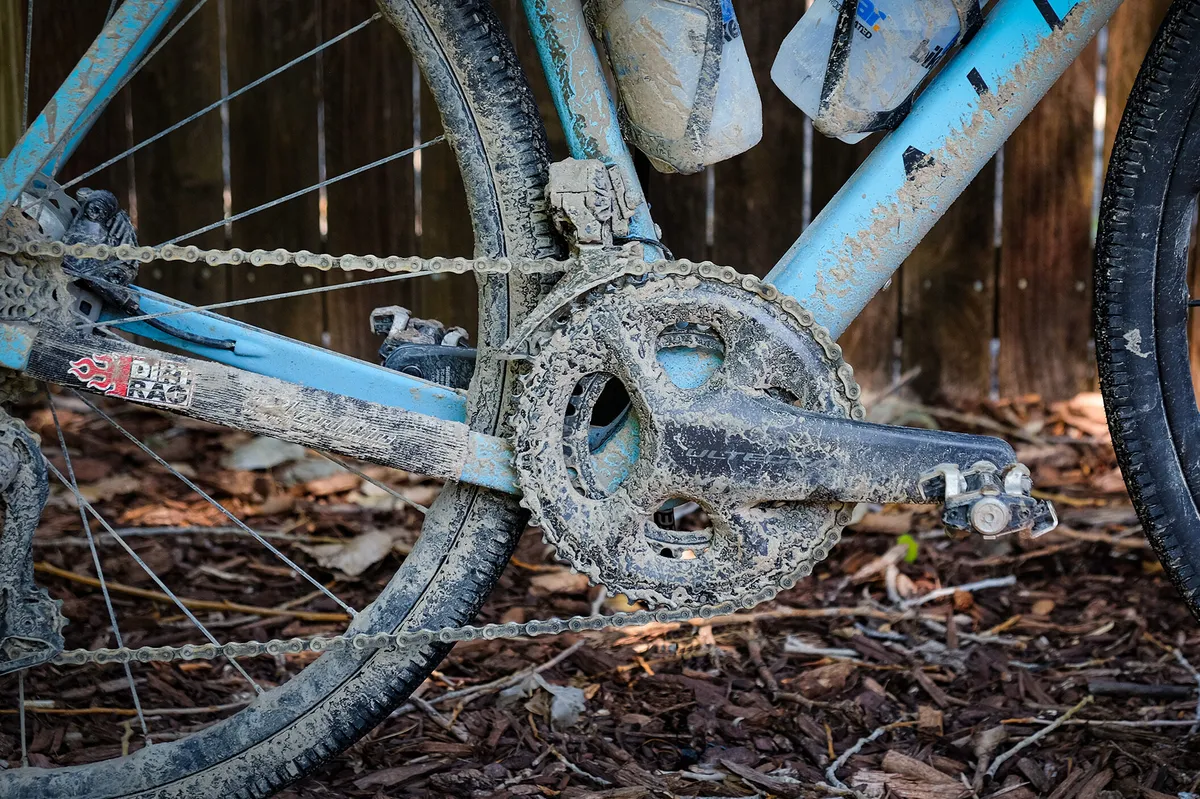
I didn’t give it much forethought when selecting my components for this event, but the carry-over of Shimano’s Servowave brake modulation technology from its mountain bike line to the latest drop-bar groups is a fantastic addition. I was easily able to feather the brakes through loose gravel corners without locking up the wheels. Well done, Shimano.
The shallow profile of the Reserve 25|GR resembles the box section “Classics” wheels from days gone by. It’s similarly comfortable and adept at absorbing high-speed road chatter from braking bumps and embedded rocks.
The 25|GR wheelset is light and compliant, but at a time when gravel racing is becoming more competitive and wide aero rims are increasingly the norm, I’m not sure there’s a large market for a high-end wheelset such as this one. In any case, it worked well for my particular needs.

If I had to do it over, I would have chosen the narrower WTB Vulpine. The Venture’s micro-tread acts like Velcro, sticking to dirt and sand. Climbing traction on steep, sandy climbs was excellent, but it gave up a fair bit of speed on hardpacked dirt roads.
The Venture is a good set-and-forget tread pattern for general gravel riding, especially if you’re linking up singletrack, but this particular event is better suited to a faster gravel tyre. If it existed, a 40mm-wide Vulpine might have been the Goldilocks tyre I was after.
As for the Allied ECHO – was it the best of both worlds or the worst? In my experience, most two-in-one bikes fall short of the mark. As a general-purpose gravel bike, there are better options for the cyclist who wants to explore, go bikepacking, and maybe enter a gravel race for the fun of it.
In the context of a pure gravel race bike, the ECHO’s handling was impeccable. It’s fast, and responsive, and I felt comfortable for all of my 145 miles of saddle time. Tyre clearance is the ECHO’s limiting factor and the only reason I would opt for a different steed for courses laden with thick mud and clay, such as this year’s Unbound Gravel or the always unpredictable Midsouth.
More from Horse for the Course
Our Horse for the Course series sees the BikeRadar team and contributors pit a bike against an epic ride in the ultimate meeting of rider, equipment and two-wheeled challenge. We take a deep dive into the tech decisions behind each ride – and the result: what worked, what didn't and what we'd change next time.
For more, head to our Horse for the Course archive or check out some of the adventures below.
